- Bellingham Scoop
- Posts
- Bellingham Scoop: Wednesday Morning
Bellingham Scoop: Wednesday Morning
20 Year City Plans, Sudden Valley Community Tensions
Good morning, Bellingham! It’s Wednesday, November 5, 2025!
Hope you remembered to set your clocks back—and didn’t just rely on your microwave to catch up. This week, we’ve got city-shaping plans, community uproar over a controversial budget, and plenty of local fun to help ease you into November like a flannel-lined hug.
This Week’s Must-Dos:
🍂 Bellingham Farmers Market — Last Few Outdoor Weeks!
📍 Saturday, Nov 9 | 10 AM–2 PM | Depot Market Square
Bundle up and grab your reusable bags! We're nearing the end of the main outdoor season, so now’s your chance to stock up on local produce, handmade gifts, and fresh cider before the market moves indoors for the winter. Bonus: rumor has it the kettle corn guy is bringing his maple blend.
🎶 Downtown Sounds: Fall Acoustic Series
📍 Thursday, Nov 7 | 5 PM–8 PM | Bay Street Parkade
A cozy twist on the summer classic—this mini music night features local artists, warm drinks, and twinkle lights. Think less “mosh pit,” more “swaying with a chai in hand.” Layers encouraged.
🧙 Fairhaven Candlelight Tours — Final Week!
📍 Daily through Friday, Nov 8 | 6 PM | Fairhaven Village Green
Step back in time with these spooky (but family-friendly!) guided history tours through Fairhaven’s oldest streets. Lanterns provided, ghosts optional. Tickets are limited and going fast!
Budget Brouhaha in Sudden Valley
In a decision that’s sparking heated conversation across the community, Sudden Valley officially approved its 2026 Annual Consolidated Budget, but not without a wave of frustration from residents who feel their voices were overlooked.
At the heart of the issue? The numbers. Of the votes cast, 474 voted to approve the $8.1 million budget (comprising $5.9M in assessment revenue and $2.1M in non-assessment revenue), while 601 residents voted to reject it. Despite that clear majority voting "No," the measure still passed under Washington state law.
Confused? You're not alone.
Under Revised Code of Washington (RCW) 64.90.525, if a majority of all eligible homeowners (not just those who voted) don’t actively reject the budget, it is automatically ratified. In Sudden Valley’s case, that threshold would have required at least 1,561 “no” votes to formally reject the budget. With turnout well below that number, the budget was deemed approved, a technicality that's leaving many residents feeling steamrolled.
“How is that even OK?”
The online reaction was swift and fiery.
“I feel like I’m giving my undetermined amount of money to people that don’t know the first thing about the word BUDGET,” wrote one frustrated homeowner on Facebook. “And live in an alternative reality than I do. How is that even ok? How?”
Others echoed the sentiment, calling the approval process “crazy frustrating” and “complete BS.” Several commenters expressed concern that their input is routinely ignored, claiming the board “lives in a silo” and describing the system as morally flawed and out of step with the community.
“This is their very own little piggy bank,” one resident wrote. “You have no idea the depths of their moral shortcomings. And you get to fully fund it.”
Yikes.
Not Everyone’s Surprised
Amid the backlash, some residents pointed out that this isn’t unique to Sudden Valley. As one commenter explained, state law was designed to prevent HOAs from spiraling into disrepair due to inaction or voter apathy, a real risk in larger, more complex communities. If fewer than 50% of all owners vote to reject the budget, it's automatically approved.
But that explanation didn’t do much to soothe the sting for those who actively voted against the budget. The mood across the comments section seemed less about the law itself and more about the sense of being unheard and unrepresented.
What’s Next for Sudden Valley?
With the budget now approved, the board moves forward with the 2026 fiscal plan, but the fracture between leadership and residents may be the bigger issue looming over the community. Several residents are already calling for increased transparency, new candidates for future board elections, and even exploring legal challenges.
What do you want me to send?! |
🚧 Big Plans Ahead: Draft "Bellingham Plan" Unveiled to Guide City’s Growth Through 2045
Here’s what’s coming (and what might be coming near you)
Bellingham is laying out the blueprint for its future, and it’s a big one. The Draft Bellingham Plan, just released as part of the city’s 20-year comprehensive planning process, gives us a first look at how the city intends to grow through 2045—and spoiler alert: it’s all about density, walkability, and protecting what makes Bellingham, well, Bellingham.
Let’s dig into what’s inside the plan and why it matters for you, your neighborhood, and your favorite corner café.
🌆 What Is the Bellingham Plan?
Think of it as the city’s master recipe for how it wants to grow, develop, and serve its residents over the next two decades. This plan addresses everything from housing and jobs to open spaces and climate resilience. It’s a legal requirement under Washington’s Growth Management Act—and also a great chance for the community to weigh in on big-picture decisions.
🏘️ Where Will Growth Go? (Spoiler: It’s Mostly Already Built)
By 2045, Bellingham is expected to grow by:
34,000 new residents
18,000 new homes
23,000 new jobs
The plan’s strategy is clear: focus growth in already urbanized areas. That means expanding housing options near places like downtown, Cordata, Barkley Village, and Samish Way while preserving green spaces and minimizing urban sprawl.

🛑 The Urban Growth Area (UGA) isn’t expected to expand. Instead, the City is emphasizing “urban villages” and “15-minute neighborhoods” where folks can live, work, shop, and play—without needing to drive across town.
🏗️ Zoning, Housing & Density (aka The Hot Topics)
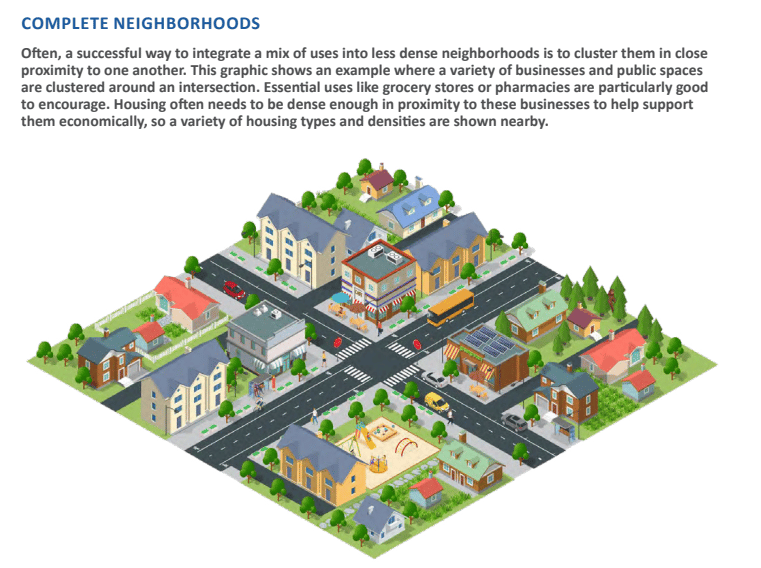
The plan calls for:
More housing types in single-family areas, such as duplexes, triplexes, townhomes, and ADUs.
Encouraging mixed-use development in key growth areas.
Affordability goals: Supporting more housing that’s accessible to low- and moderate-income households.
Don’t be surprised if you see taller buildings and more multi-family projects popping up in areas already zoned for higher density.
🌿 Nature Isn’t Getting Left Behind
The plan keeps environmental priorities front and center:
No development in critical areas (hello, wetlands and steep slopes).
Expanded protections for trees and urban forests.
Strong focus on climate resilience, including greener transportation and stormwater management strategies.
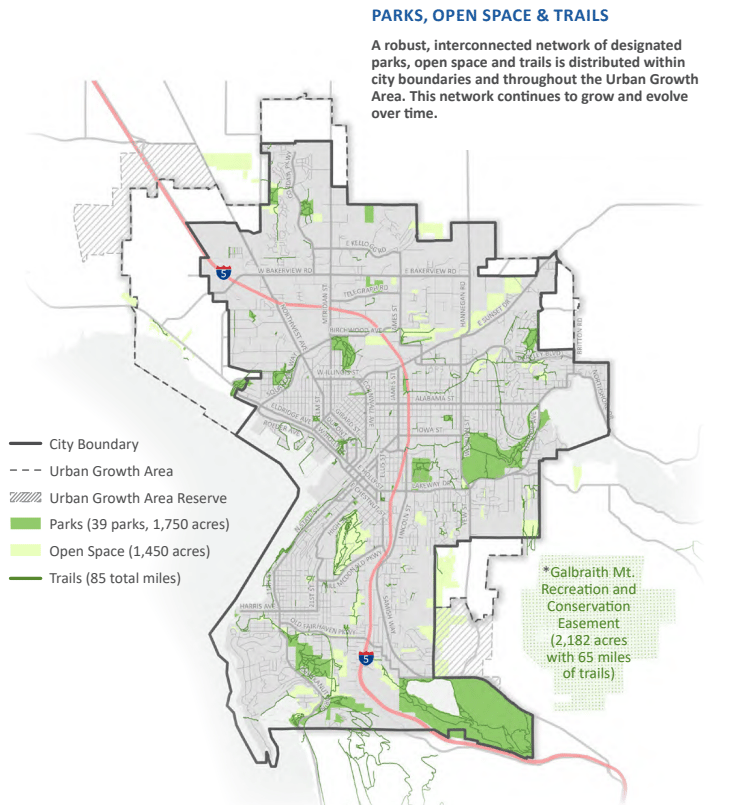
Bonus points for bees: the city’s planning to integrate pollinator-friendly green spaces.
🚌 Transit, Trails, and Traffic
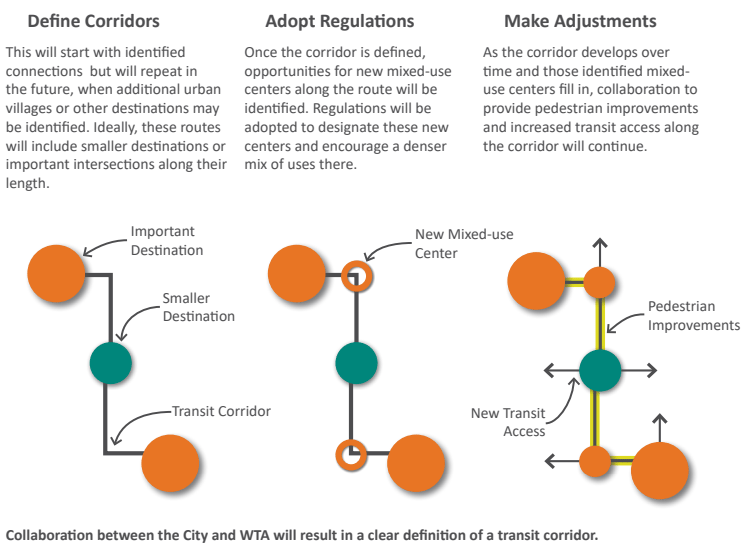
You’ll see more attention on:
Supporting WTA service expansions and reducing car-dependency.
Making streets safer for walkers, cyclists, and kids on scooters.
Improving east-west connections across the city (looking at you, Lakeway traffic).
The “15-minute city” model is more than a buzzword here—it’s central to the plan’s transportation vision.
🧒 Community Services, Jobs & Equity
The Bellingham Plan lays out goals to:
Make city services more equitable and accessible.
Preserve industrial land for living-wage jobs.
Expand partnerships for youth programs, arts, and social services.
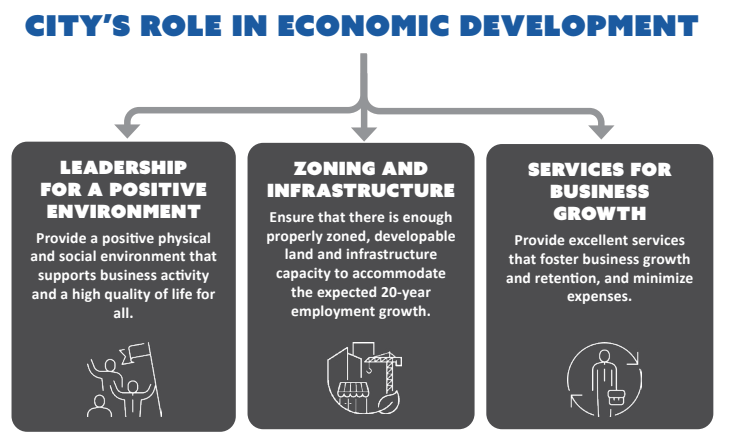
The idea? Build a city where everyone can thrive, not just afford to live.
🗣️ What Happens Next?
This is a draft—and the city is actively seeking community input. You can:
✅ Read the full plan on cob.org (here is a direct link)
✅ Attend public hearings and planning commission meetings
✅ Send comments or suggestions before the final version is adopted in 2025
This is your chance to shape the Bellingham your kids (and your grandkids’ bikes) will grow up in.
Did you enjoy this newsletter? |
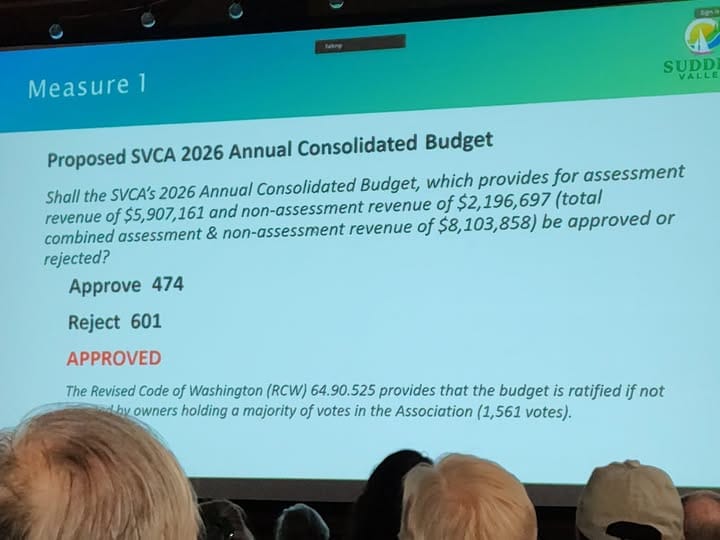
Reply